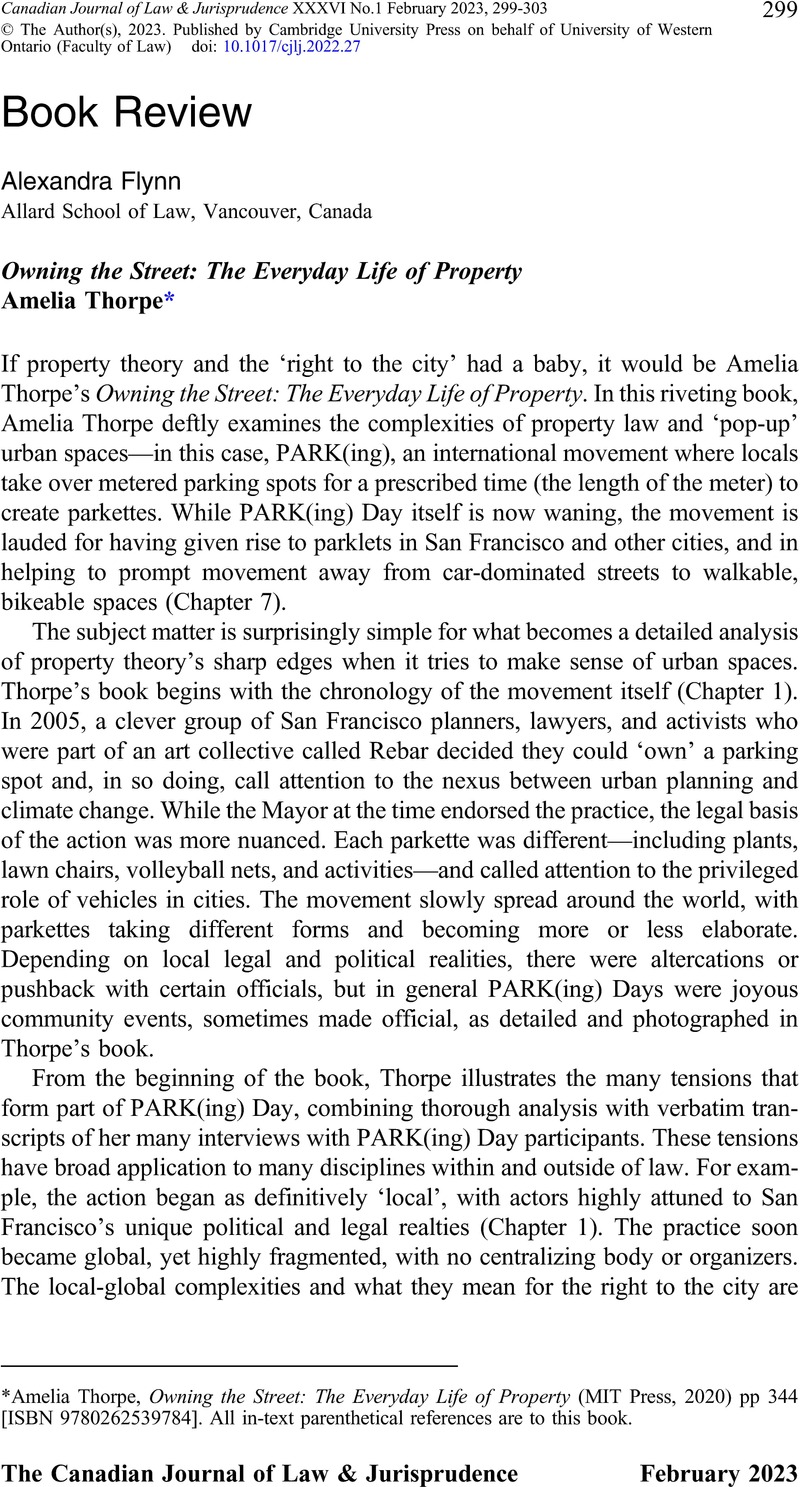No CrossRef data available.
Published online by Cambridge University Press: 20 January 2023

Amelia Thorpe, Owning the Street: The Everyday Life of Property (MIT Press, 2020) pp 344 [ISBN 9780262539784]. All in-text parenthetical references are to this book.
1. See Luis Eslava, Local Space, Global Life: The Everyday Operation of International Law and Development (Cambridge University Press, 2015).
2. Ibid at 12.
3. See Boaventura de Sousa Santos, “Law: A Map of Misreading. Toward a Postmodern Conception of Law” (1987) 14:3 JL & Soc’y 279.
4. See Patricia Ewick & Susan S Silbey, The Common Place of Law: Stories from Everyday Life (University of Chicago Press, 1998).
5. See Robert M Cover, “The Supreme Court, 1982 Term” (1983) 97:1 Harv L Rev Foreword at 4.
6. See Hendrik Hartog, “Pigs and Positivism” (1985) Wis L Rev 925.
7. See Carol Rose, Property and Persuasion: Essays on the History, Theory, and Rhetoric of Ownership (Westview Press, 1994).
8. See Davina Cooper, Everyday Utopias: The Conceptual Life of Promising Spaces (Duke University Press, 2013).
9. See e.g. Ari Shapiro, “Street Signs Connect Modern Day Toronto To Indigenous History,” NPR (27 September 2016) at 16h:34m:00s, online (podcast): https://www.npr.org/2016/09/27/495671329/street-signs-connect-modern-day-toronto-to-indigenous-history (in 2016, two Indigenous scholars and activists put up official-looking street signs on major streets in Anishnaabemowin to showcase Toronto’s Indigenous history); Doug Anderson & Alexandra Flynn, “Rethinking ‘Duty’: The City of Toronto, A Stretch of the Humber River and Indigenous-Municipal Relationships” (2020) 58:1 Alta L Rev 107 (includes a case study of a park area used by Indigenous Peoples to plant traditional foods and medicines, and to conduct ceremonies along Toronto’s Humber River).
10. Stephen Wexler, “Practicing Law for Poor People” (1970) 79:5 Yale LJ 1049 at 1050.
11. See AJ Van Der Walt, Property in the Margins (Hart, 2009).
12. See Randall Amster, Lost in Space: The Criminalization, Globalization, and Urban Ecology of Homelessness (LFB Scholarly, 2008).
13. See Sarah Ferencz et al, “Are Tents a ‘Home’? Extending Section 8 Privacy Rights for the Precariously Housed” McGill LJ [forthcoming in 2022].